|
December 2017 - March 2018 |
| |
|
|
 |
|
 |
| |
Publisher: Chairman Gong-Ru Lin Editors: Professor
Chao-Hsin Wu, Ms. Hsiao-wen Lin May 30, 2018 |
| |
|
 |
|
Congratulations to the following GIPO students on being awarded the “OPTIC 2017 Student Paper Award”, under the instruction of each of the following advisers:
|
Student |
Award |
Adviser |
|
Ting-Han Chou |
OPTIC 2017 Student Paper Award-Oral (master student)
Title: Ultra-Low Propagation Loss of Femtosecond Laser Induced THz Acoustic Phonons in Wurtzite GaN
|
Chi-Kuang Sun |
|
Teja Avula |
OPTIC 2017 Student Paper Award-Poster (master student)
Title: Fabrication of High Efficiency Single Halide Lead Perovskite Solar cells by Sandwich Deposition Technique
|
Ching-Fuh Lin |
|
Yu Cheng |
OPTIC 2017 Student Paper Award-Oral (master student)
Title: Dielectric Barrier Discharge (DBD) Processed CH3NH3PbI3 Layer for Perovskite Solar Cells
|
I-Chun Cheng,
Chih-I Wu |
|
|
 |
|
 |
|
| |
|
 |
|
September “GIPO Colloquium” Highlights
(Compiled by Li-Chi Yao) |
|
Subject: |
Workshop on Biomedical Optics Imaging |
|
|
4:30 pm, Sep. 22 (Fri.), 2017 |
|
|
GIPO professor Sheng-Lung Huang held the “Workshop on Biomedical Optics Imaging” and invited Dr. Milind Rajadhyaksha and Dr. Jason Chen to deliver speeches at auditorium 101, Barry Lam Hall, on Sep. 22 (Fri.). Their speeches were excellent, rich in content and interacted well with students. GIPO teachers and students participated in this event with enthusiasm and learned a great deal. |
|
Speaker: |
Dr. Milind Rajadhyaksha, Associate Member, Dermatology Service, Memorial Sloan-Kettering Cancer Center, New York, USA |
|
Topic: |
Instrumentation of confocal microscopy |
| |
|
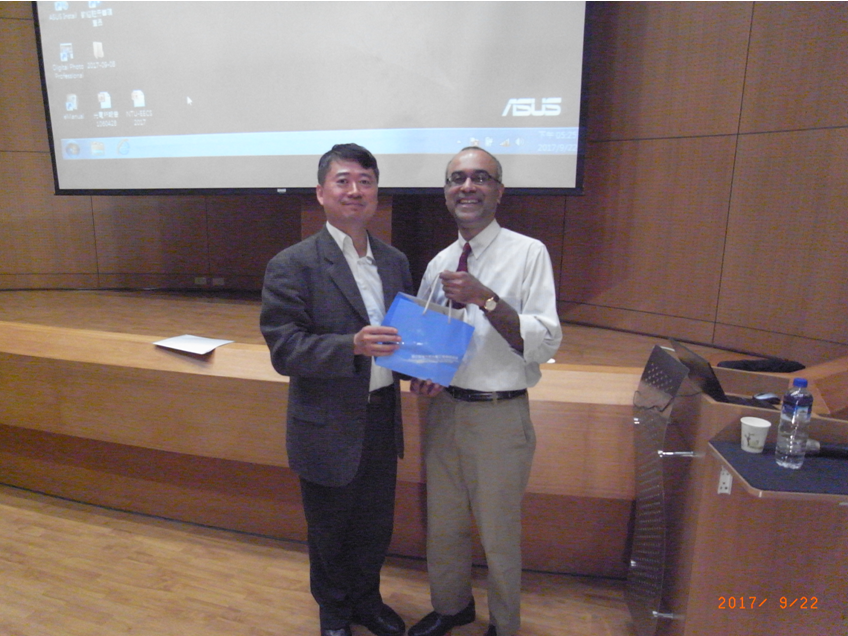 |
|
Dr. Milind Rajadhyaksha (right) and GIPO professor Sheng-Lung Huang (left) |
|
|
Speaker: |
Dr. Jason Chen,
MD, Director, Dermatologic Surgery,
Memorial Sloan Kettering Skin Cancer
Center, Hauppauge, New York, USA |
|
Topic:
|
Cutaneous confocal microscopy, from bench top to bedside |
|
|
|
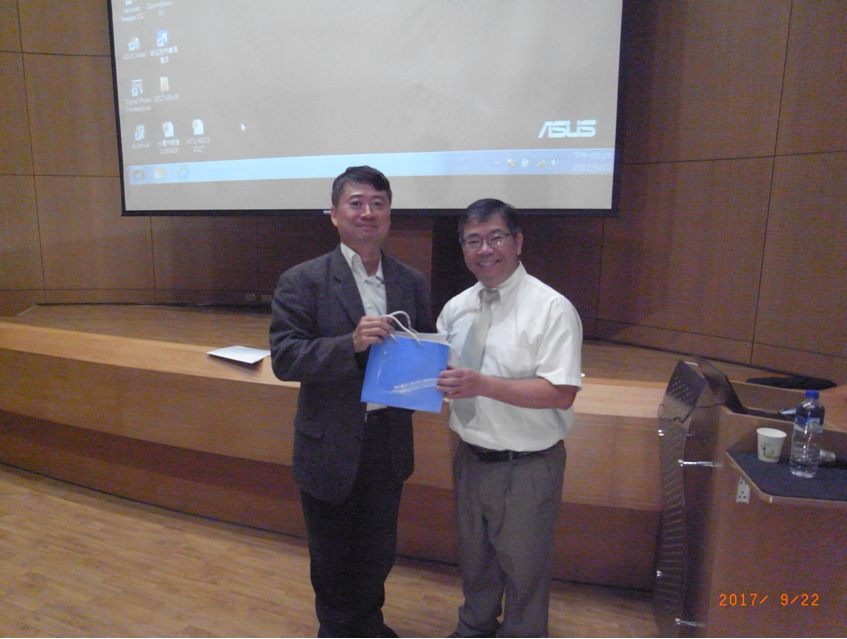 |
|
Dr. Jason Chen (right) and GIPO professor Sheng-Lung Huang (left) |
|
|
October “GIPO Colloquium” Highlights
(Compiled by Li-Chi Yao) |
|
Time: |
2:20 pm,
Oct. 20 (Fri.), 2017 |
|
Speaker: |
Mr. Tsung-Lin Tseng,
Ex-chief Financial Officer, Taiwan Semiconductor Manufacturing Company Limited |
|
Topic:
|
Business financial management and individual financial management of scientists and engineers |
|
|
Mr. Tsung-Lin Tseng visited GIPO on Oct. 20 (Fri.) and delivered a speech concerning “Business financial management and individual financial management of scientists and engineers” at room 103, CSIE-Der Tian Hall. This speech was mostly concerning his personal business investment experiences, which was exciting and informative for the audience. Mr. Tseng also interacted very well with students. GIPO teachers and students took part with enthusiasm and gained a great deal. |
|
|
|
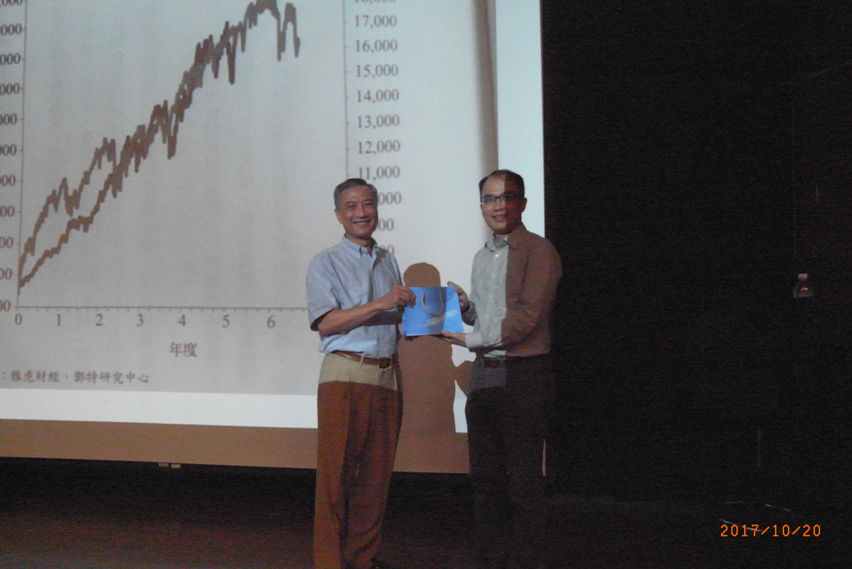 |
|
Mr. Tsung-Lin Tseng (left) and Professor Jian-Jang Huang, Vice chairman of GIPO (right) |
|
|
Time: |
4 pm, Oct. 20 (Fri.), 2017 |
|
Speaker: |
Professor John Dallesasse, Electrical and Computer Engineering, UIUC |
|
Topic:
|
Enhancing Silicon: Progress on Silicon Photonics and Heterogeneous Integration |
|
|
Professor John Dallesasse, answering GIPO professor Chao-Hsin
Wu’s invitation and visiting GIPO on Oct. 20 (Fri.), delivered a speech concerning “Enhancing Silicon: Progress on Silicon Photonics and Heterogeneous Integration” at room 103, CSIE-Der Tian Hall. His speech was wonderful, informative and the professor interacted very well with students. GIPO teachers and students participated with enthusiasm and benefitted a great deal. |
|
|
|
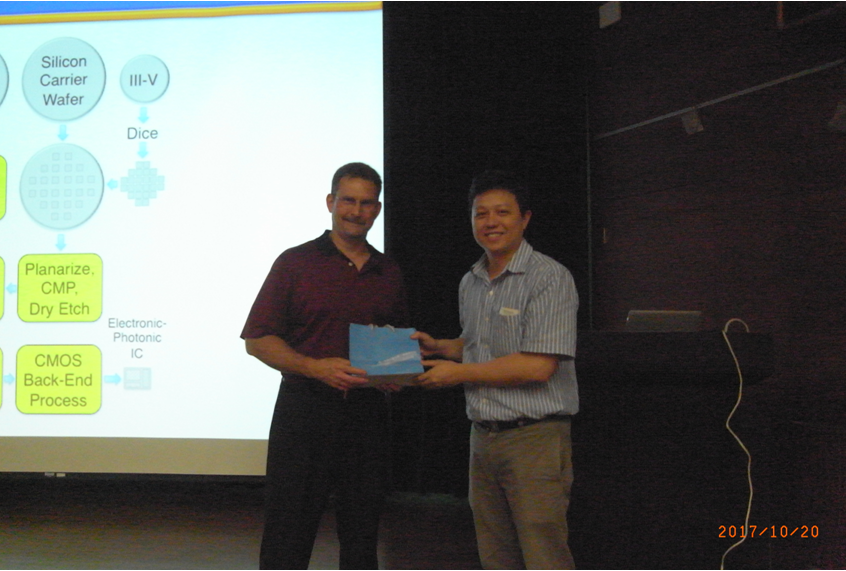 |
|
Professor John Dallesasse (left) and GIPO professor Chao-Hsin Wu (right) |
|
|
Time: |
2:20 pm,
Oct. 27 (Fri.), 2017 |
|
Speaker: |
Professor Tsong-Sheng Lay, Department of Electrical Engineering and Graduate Institute of Optoelectronic Engineering, National Chung Hsing University |
|
Topic:
|
Photonic Molecule: Optical-coupled microcavities embedded with quantum dots |
|
|
Professor Tsong-Sheng Lay, answering GIPO professor Chieh-Hsiung Kuan’s invitation and visiting GIPO on Oct. 27 (Fri.), delivered a speech concerning “Photonic Molecule: Optical-coupled microcavities embedded with quantum dots” at auditorium 101, Barry Lam Hall. His speech was exciting and informative, and the professor interacted very well with students. GIPO teachers and students took part with enthusiasm and learned a great deal. |
|
|
|
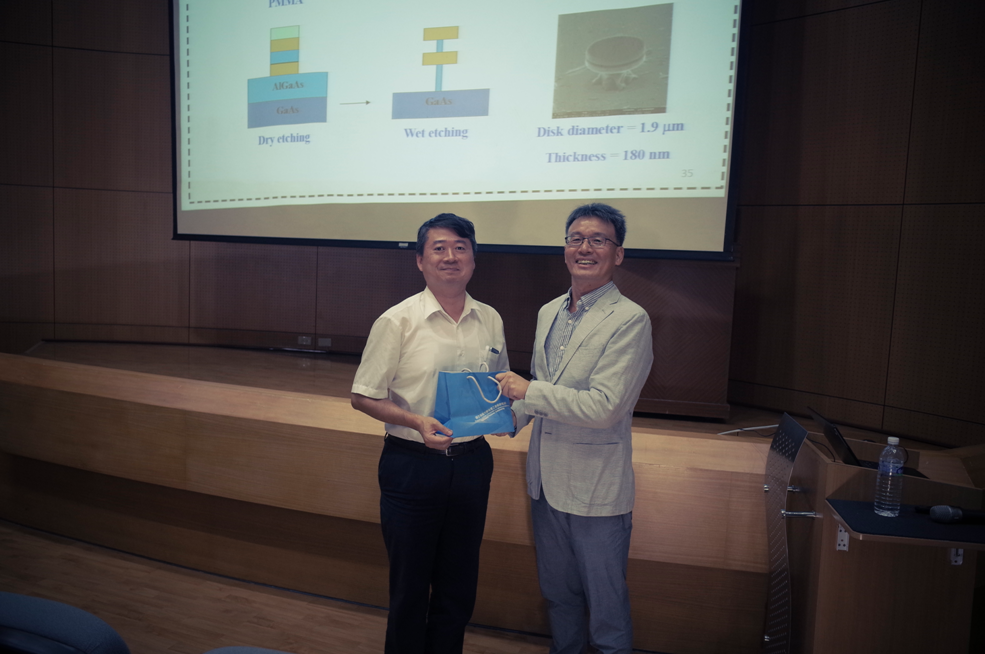 |
|
Professor Tsong-Sheng Lay (right) and GIPO professor Sheng-Lung Huang (left) |
|
|
Time: |
4 pm, Oct. 27 (Fri.), 2017 |
|
Speaker: |
Professor David S. Citrin, Electrical and Computer Engineering, Georgia Institute of Technology |
|
Topic:
|
Terahertz imaging for nondestructive testing |
|
|
Professor David S. Citrin visited GIPO on Oct. 27 (Fri.) and delivered a speech concerning “Terahertz imaging for nondestructive testing” at auditorium 101, Barry Lam Hall. His speech was excellent and informative, and the professor interacted well with students. GIPO teachers and students participated with enthusiasm and learned a great deal. |
|
|
|
 |
|
Professor David S. Citrin (right) and GIPO professor Hsiang-Chieh Lee (left) |
|
|
November “GIPO Colloquium” Highlights
(Compiled by Li-Chi Yao) |
|
Time: |
1:30 pm,
Nov. 10 (Fri.), 2017 |
|
Speaker: |
Professor Roel Baets, Department of Information Technology, Ghent University - IMEC |
|
Topic:
|
1. EMSP program introduction 2. Silicon photonics for (bio)sensing and medical applications |
|
|
Professor Roel Baets visited GIPO on Nov. 10 (Fri.) and delivered two speeches concerning “EMSP, European Master of Science in Photonics, program introduction” and “Silicon photonics for (bio)sensing and medical applications” respectively at auditorium 105, EE-II Building. His speech was wonderful, informative and the professor interacted very well with students. GIPO teachers and students took part with enthusiasm and gained a great deal. |
|
|
|
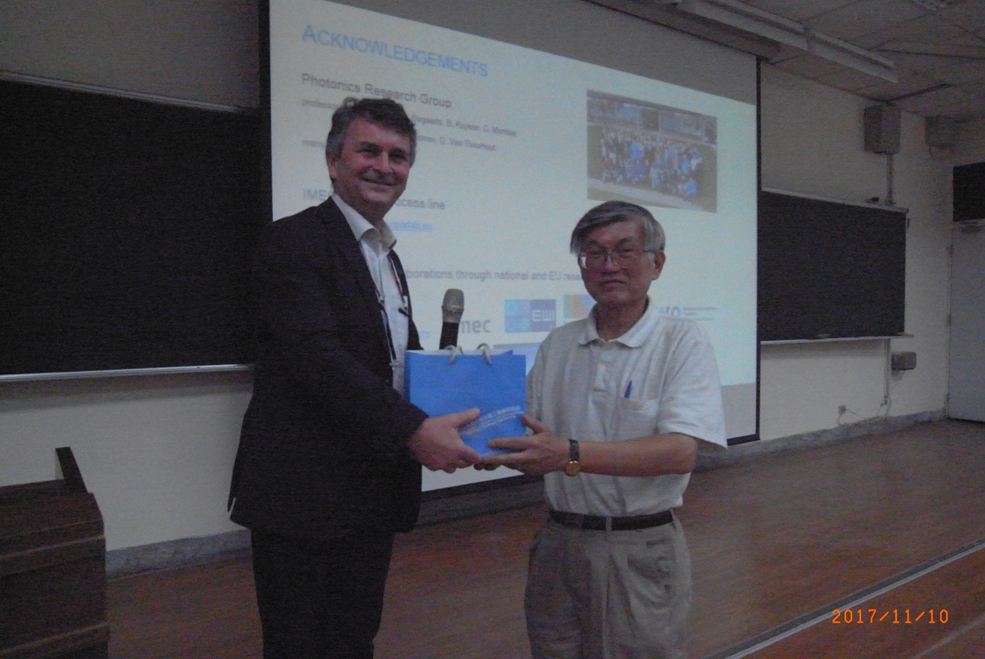 |
|
Professor Roel Baets (left) and GIPO professor Hung-Chun Chang (right) |
|
|
Time: |
2:20 pm,
Nov. 24 (Fri.), 2017 |
|
Speaker: |
Professor Ya-Ju Lee, Institute of Electro-Optical Science and Technology, National Taiwan Normal University |
|
Topic:
|
Tunable random lasing |
|
|
Professor Ya-Ju Lee visited GIPO on Nov. 24 (Fri.) and delivered a speech concerning “Tunable random lasing” at auditorium 101, Barry Lam Hall. His speech was excellent, informative and the professor interacted very well with students. GIPO teachers and students took part with enthusiasm and gained a great deal. |
|
|
|
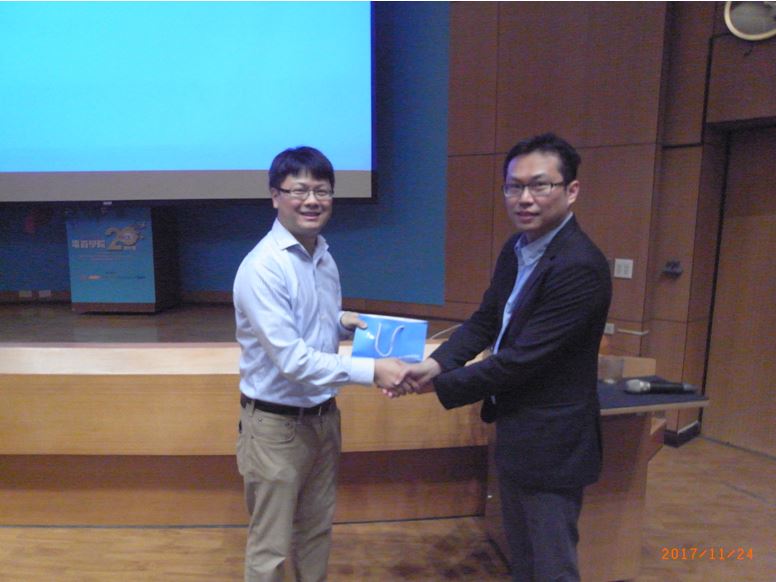 |
|
Professor Ya-Ju Lee (right) and GIPO professor Hsiang-Chieh Lee (left) |
|
|
December “GIPO Colloquium” Highlights
(Compiled by Li-Chi Yao) |
|
Time: |
3 pm,
Dec. 1 (Fri.), 2017 |
|
Speaker: |
Professor Milton Feng, Micro and Nanotechnology Laboratory, Department of Electrical and Computer Engineering, University of Illinois at Urbana-Champaign |
|
Topic:
|
1. From Alloy LEDs and Lasers to Transistor Lasers (Devices that Changed the World)
2. Open Discussion: Why Students should get international Experience Vision
|
|
|
Professor Milton Feng visited GIPO at the invitation of Professor Jian-Jang Huang on Dec. 1 (Fri.) and delivered a speech at auditorium 101, Barry Lam Hall. His speech was excellent, informative and the professor interacted very well with students. GIPO teachers and students gained a lot from this event. |
|
|
|
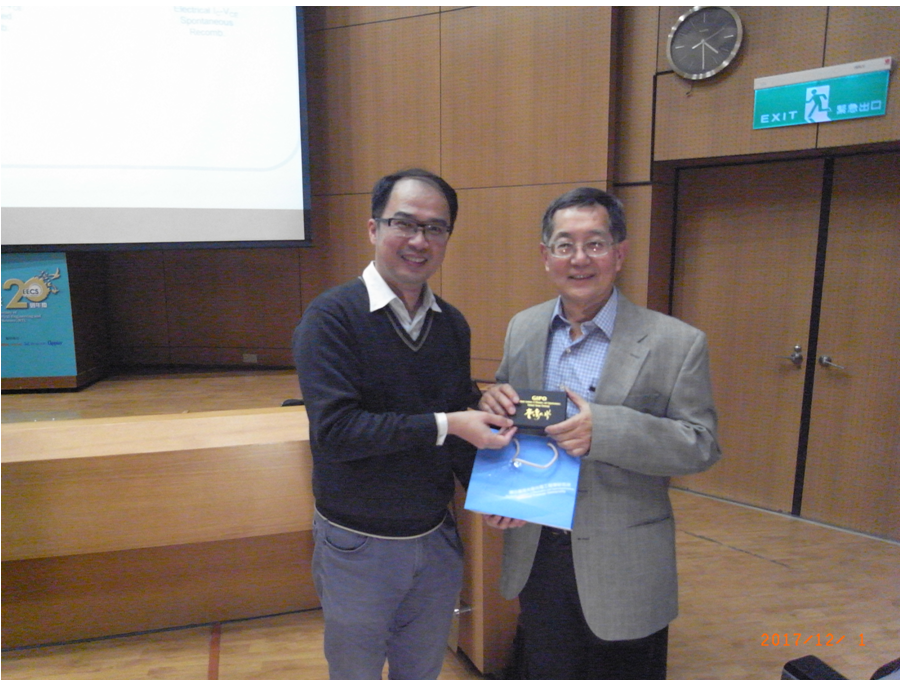 |
|
Professor Milton Feng (right) and Professor Jian-Jang Huang, Vice chairman of GIPO (left) |
|
|
Time: |
4:30 pm,
Dec. 1 (Fri.), 2017 |
|
Speaker: |
Professor Keisuke Goda, Physical Chemistry in the Department of Chemistry at the University of Tokyo |
|
Topic:
|
Extreme Imaging for Large-Scale Single-Cell Analysis |
|
|
Professor Keisuke Goda visited GIPO at the invitation of Professor Chi-Kuang Sun on Dec.1 (Fri.) and delivered a speech at auditorium 101, Barry Lam Hall. His speech was wonderful, informative and the professor interacted well with students. GIPO teachers and students benefitted a great deal from the experience. |
|
|
|
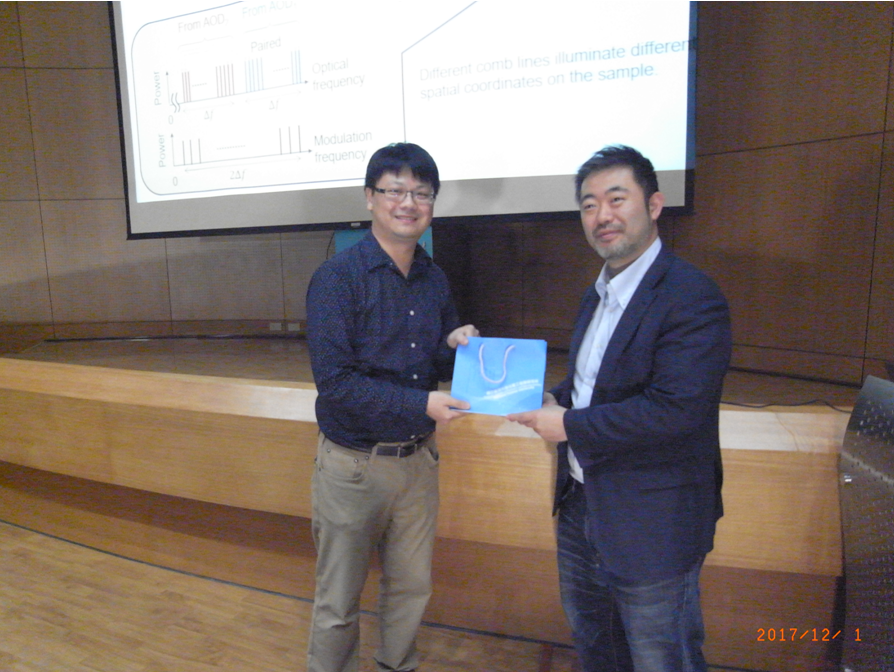 |
|
Professor Keisuke Goda (right) and GIPO professor Hsiang-Chieh Lee (left) |
|
|
Time: |
1:30 pm,
Dec. 22 (Fri.), 2017 |
|
Speaker: |
Professor Linbo Liu, School of Electrical and Electronic Engineering, College of Engineering, Nanyang Technological University, Singapore |
|
Topic:
|
Seeing the unseen using high resolution optical coherence tomography |
|
|
Professor Linbo Liu visited GIPO on Dec. 22 (Fri.) and delivered a speech concerning “Seeing the unseen using high resolution optical coherence tomography” at auditorium 101, Barry Lam Hall. His speech was wonderful, informative and the professor interacted well with students. GIPO teachers and students benefitted a great deal from the experience. |
|
|
|
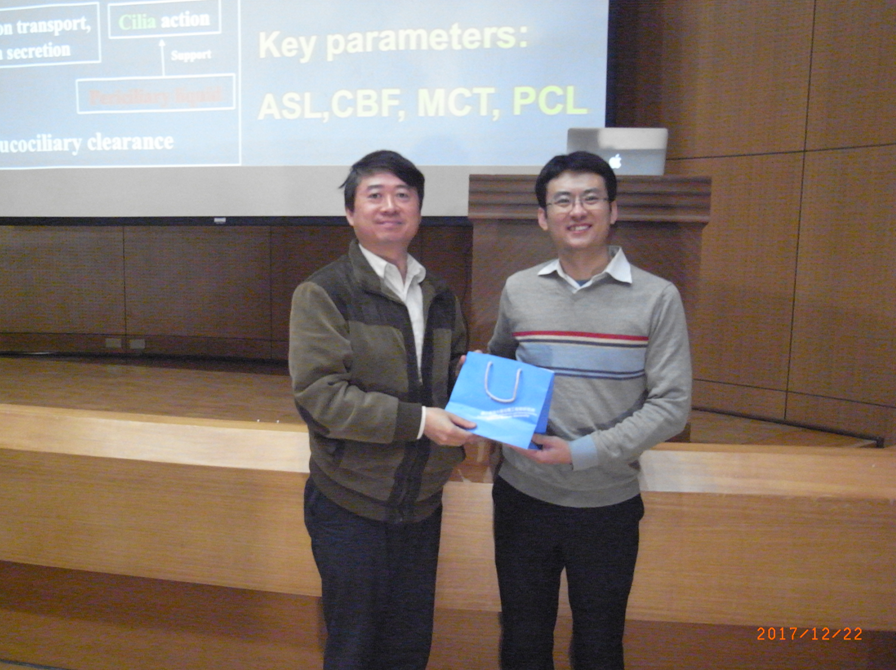 |
|
Professor Linbo Liu (right) and GIPO professor Sheng-Lung Huang (left) |
|
|
Time: |
4 pm,
Dec. 29 (Fri.), 2017 |
|
Speaker: |
Mr. Wei Wang, Chief Executive Officer, Crystalvue Medical Corporation |
|
Topic:
|
Starting a medical device business in Taiwan and the prospects of its development |
|
|
CEO Wei Wang visited GIPO at the invitation of Professor Hsiang-Chieh Lee on Dec. 29 (Fri.) and delivered a speech concerning “Starting a medical device business in Taiwan and the prospects of its development”. His speech was marvelous, informative and the professor interacted well with students. GIPO teachers and students benefitted a great deal from the experience. |
|
|
|
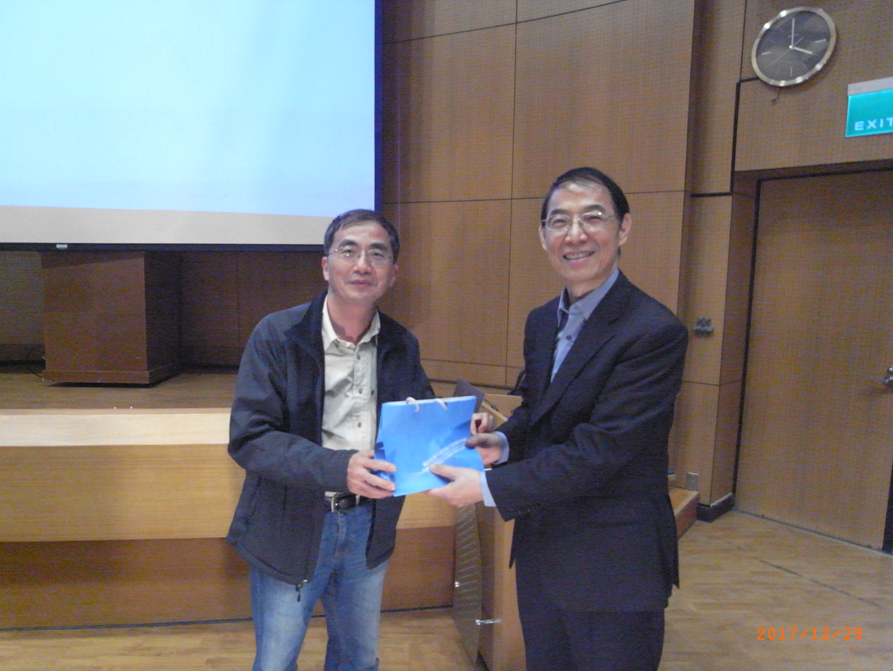 |
|
CEO Wei Wang (right) and GIPO professor Lon A. Wang (left) |
|
|
~ 2017 GIPO End-of-Semester Party ~
(Time: Dec. 22, 2017; Location: 3F courtyard of Ming-Da Hall, EECS, NTU)
Composed by
Sheng-Wen Kuo, the president of GIPO Student Association
GIPO student association held the end-of-semester party on Dec. 22, which happened to be the winter solstice of this year as well. Firstly, we would like to thank the association members for sparing your precious time, from busy studies, to help us with the association’s business. After a whole semester’s preparation, we were ready and invited all GIPO teachers and students to participate in this party. And of course, we would also like to thank GIPO office staff for your help.
|
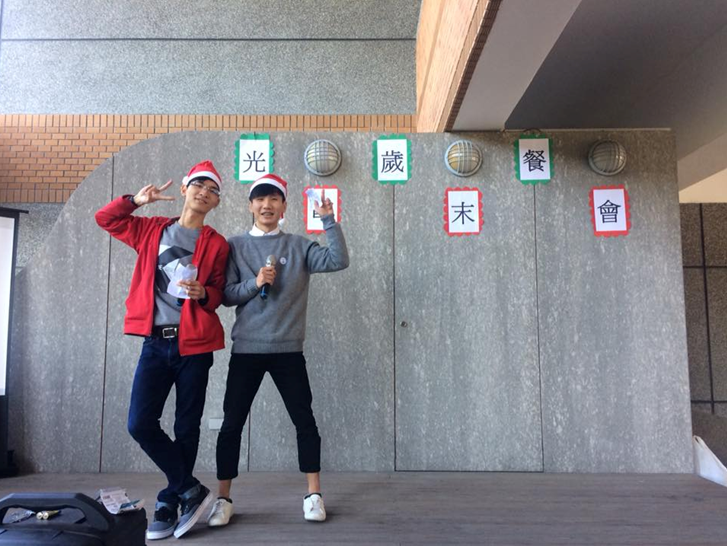 |
 |
|
Yun-Yuan Wang and Sheng-Wen Kuo, the beautiful and handsome hosts |
Students at the party |
Before the formal start of our program, we gave each person a bingo card to play with. The first five students who connected five lines on their cards could each get a movie ticket. For satisfying hungry stomachs, we asked Papago restaurant, who cooperated with us in these events for many years, to supply the food again. Of course, we carefully chose all the dishes. Aside from those delicious main dishes and soft drinks, we still had plenty of tasty desserts. Furthermore, we had a hidden menu for those who came late, or those who wanted more food. We prepared lots of extra pizza for them to enjoy to their heart’s content.
|
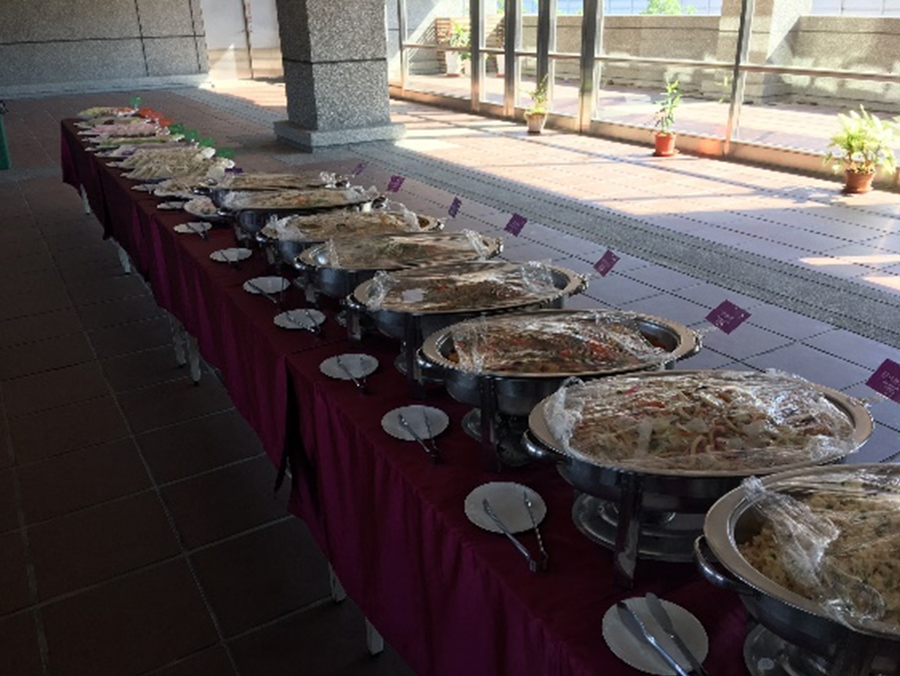 |
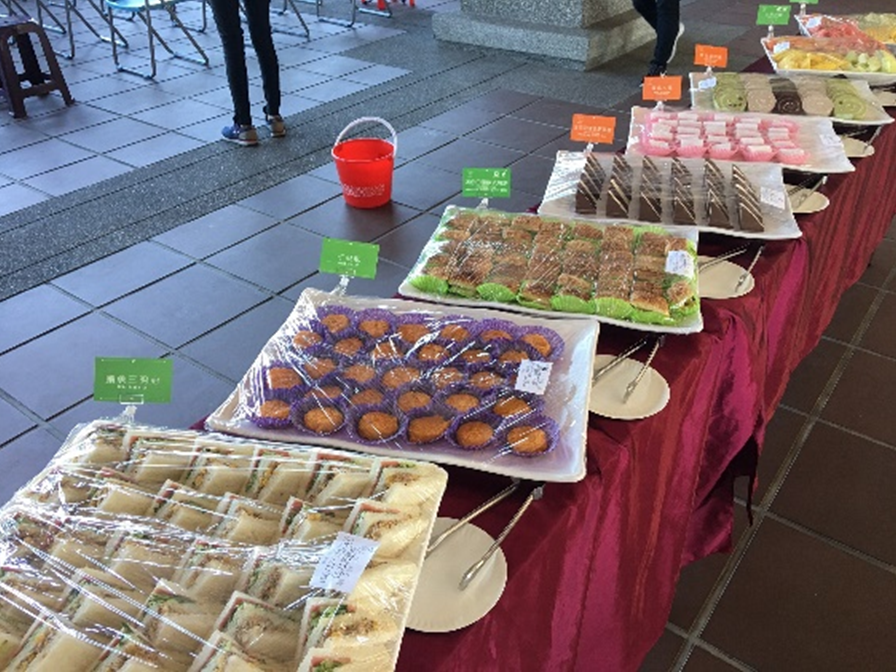 |
|
Main dishes |
Desserts |
Next, we invited GIPO’s most important person – Chairman Gong-Ru Lin to address the party. In his address, he encouraged us to spend some more time outside our studies to exercise while attending this institute, because, obviously, we need good health to accomplish our studies smoothly.
|
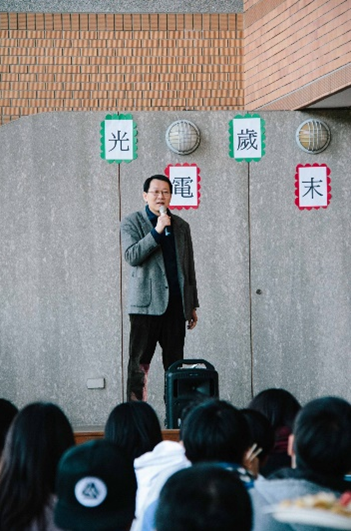 |
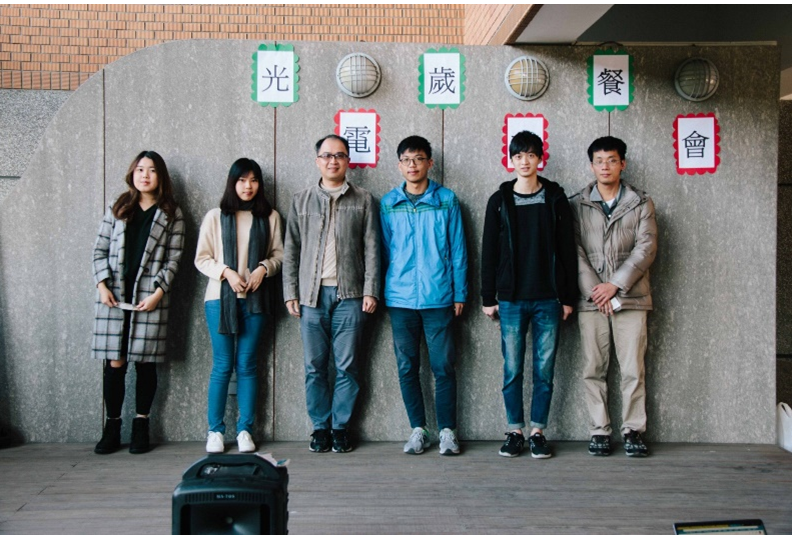 |
|
GIPO Chairman addressing the party |
GIPO Vice chairman, Professor Jian-Jang Huang drawing the lottery for us and taking a group picture with the winning student |
For the performance program, we invited GIPO’s “Prince of Love Songs” and “Walking CD” Li-Yu Yu to perform for us. He also played guitar while Chih-Wei Huang, a staff of our association and the coordinator of this party, accompanied with BBOX. Their perfect cooperation produced one love song after another, which touched our hearts, and made us want to hear it repeatedly.
|
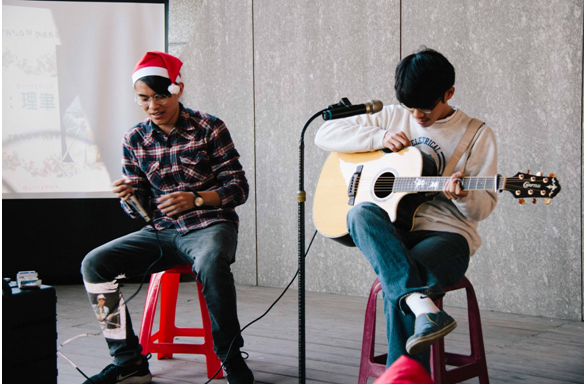 |
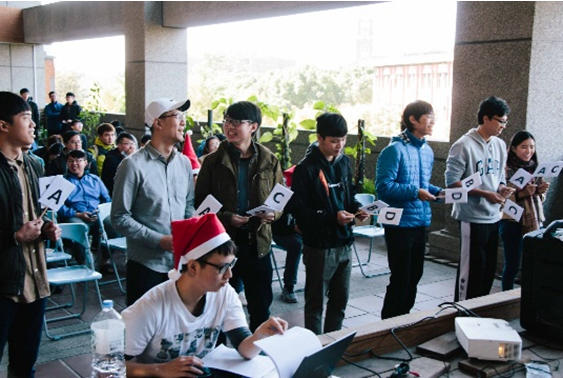 |
|
Chih-Wei Huang and Li-Yu Yu performing |
Fierce competition during the GIPO “Knowledge King” program |
For the group game, we had the GIPO “Knowledge King” program. The questions we designed were not just those existing in textbooks. The one who overcame the challenge of our meticulously organized questions would become this year’s Knowledge King and acquired a movie ticket. They would have to have knowledge on a wide range of studies from astronomy to geography and from ancient to modern times, including NTU’s surroundings, necessary optoelectronics knowledge, childhood cartoon games, and many current events. Only the one who answered the most correct questions could become this year’s knowledge king and obtained a movie ticket.
|
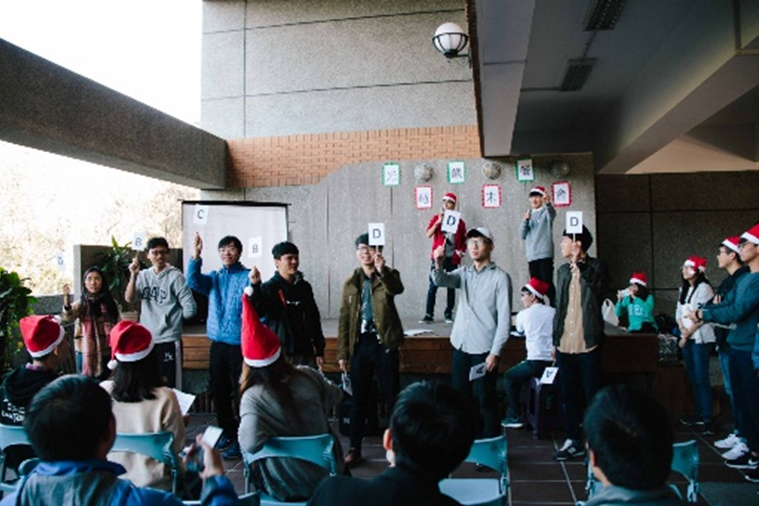 |
|
In the competition, everyone is
your enemy |
The last and the most exciting program was the lottery drawing, because it involves many prizes. For the third prize, we had movie tickets, thermos mugs and backpacks; for the second prize, we had hard drives, Sogo gift vouchers, exercise earphones and pocket photo printers; and for the first prize, we had iPad 128G. So many prizes made the lottery drawing much more fun.
|
 |
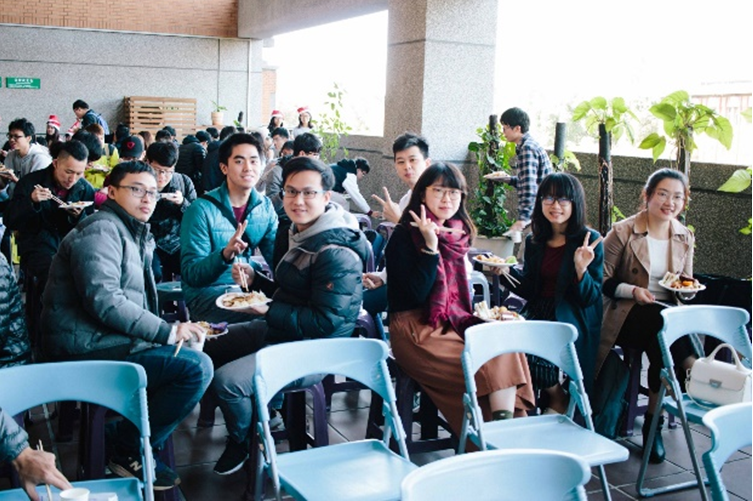 |
|
Students praying for winning the first prize |
Students stuffed with delicious foods and drinks happily taking pictures |
This semester’s GIPO student association activities are almost over. We would like to thank all teachers and office staff for helping us and solving our problems whenever we needed help. We would also like to thank our association’s friends; we could not possibly accomplish such a successful party without your participation. We will also work hard to make the event better each year. See you again next semester!
|
 |
|
Members of the GIPO student association |
|
|
 |
|
 |
|
| |
|
 |
|
~ 2017 Ph.D. Student Academic Exchange with Nanjing University ~
(The 10th Cross-Strait Ph.D. Student Forum on Photonic Science and Technology, 2017)
(Time: Oct. 29 ~
Nov.
4, 2017; Location: Nanjing University)
Composed by
Lei Xu,
GIPO Ph.D. student
The 10th Cross-Strait Ph.D. Student Forum on Photonic Science and Technology formally opened at Nanjing University on Oct. 30, 2017. This year’s forum has been a milestone for interactions between the two sides, because it represents the success of the forum itself and the sincerity and close cooperation between Nanjing University and NTU over the past 10 years. Therefore, to be able to attend this year’s forum is a great honor to me. Its activities lasted two whole days, and included both universities’ teachers’ academic speeches and students’ study reports. The students’ reports were divided into 5 categories: Photodetectors and Display, Two-Dimensional Materials and Technology, Metasurface and Artificial Materials, Photoemission Spectroscopy and Solar Cells, and Physics Optics.
At the beginning of the session, the teachers were invited to deliver their speeches. Firstly, Professor Jian-Jang Huang introduced to us the method to analyze the time domain of a protein complex using IGZP TFTs. Next, Professor Hui Liu, Nanjing University, introduced to us the way to make a gravitational lensing microstructure optical waveguide to control photon movement. Next, Professor Chee-Wee Liu introduced to us the MOSFETs basing on Ge/GeSn and the industrial developments of MOSFETs. Lastly, Professor Xiaoshun Jiang, Nanjing University, introduces to us the spreading of on clip nonreciprocal light in high Q micro-cavity. After the teachers’ speeches, the 18 students’ wonderful reports followed. Although everyone’s study domain differs, we still all drew inspiration for our own work through the experiencing of other fields of studies. These 18 reports covered a wide range of domains, and drew great interest from the audience. Last year’s poster exhibition was continued this year after the reports completed. Throughout the poster exhibition, not only could students interact with their studies once more, but teachers could also discuss issues and advise students further.
|
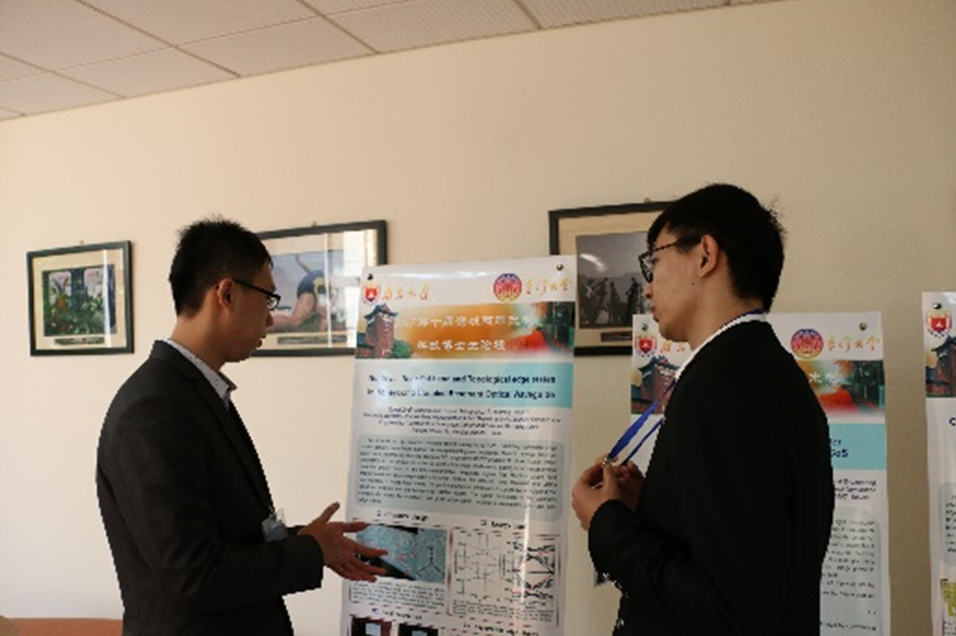
|
|
Students interacting |
|
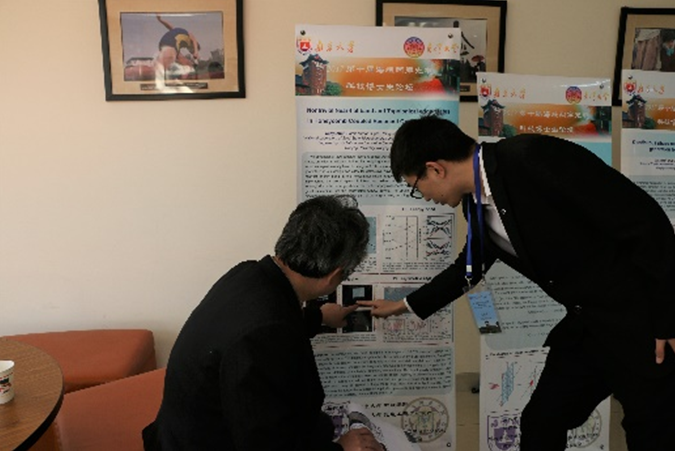
|
|
Teachers and students exploring studies
together |
Due to his charming wit and humor and his excellent report on CVD graphene, GIPO student Ang-Sheng Chou won the best paper award. Xiangyang Wang, the team leader of Nanjing University, also did a good job, discussing Professor Hui Liu’s work in detail. He is deemed to have kept pace with the previous winner, and won best paper award. The NTU Team leader Chia-Shuo Li’s report concerning perovskites attracted the interest of many students. Nanjing University student Xueyi Zhu’s report concerning the study of quantum topological state especially attracted Professor Chee-Wee Liu’s close attention, and therefore he and Chia-Shuo Li both won best popularity award. After having awarded these prizes, the 10th Cross-Strait Ph.D. Student Forum on Photonic Science and Technology finally ended amid students’ laughter.
|
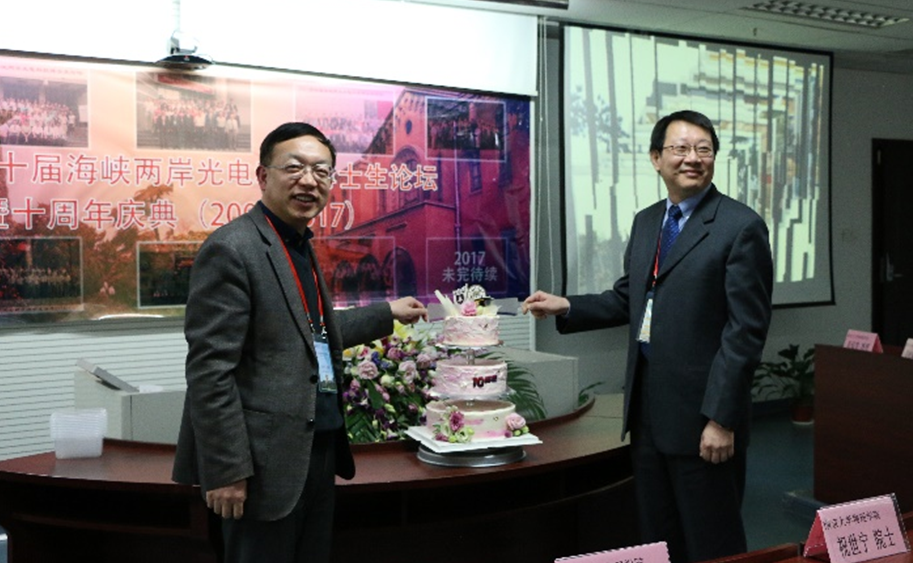
|
|
Nanjing University’s deputy dean Xing-Long Wu and GIPO chairman Gong-Ru
Lin are slicing the 10th
anniversary cake together |
Finally, we would like to use a Nanjing University teacher’s words to conclude this paragraph: we hope that under the joint efforts of both universities, the “Cross-Strait Ph.D. Student Forum on Photonic Science and Technology” can be like a gravitational wave, not only lasting a long time, but also spreading its influence far and deep.
|
|
 |
|
 |
|
| |
|
 |
MBE growth of the highly mismatched alloy InAsPSb
Professor Hao-Hsiung Lin
Graduate Institute of Photonics and
Optoelectronics, National Taiwan University
The two binaries consisting of alloy InPSb are very different in bond properties which make the bonds in the alloy suffer from very large distortion. In such alloy, the atoms deviate from their lattice points, resulting in peculiar electronic and optic properties. In this work we performed temperature dependent XRD measurement to probe Debye-Waller’s factor, from which the mean square of the atomic deviation can be extracted. For comparison, binary InAs and alloy InPSb were measured. The atomic deviation in binary InAs is attributed to thermal vibration. In addition to thermal vibration, InPSb shows a large static deviation, whose root mean square value is 0.28Å.
|

|
|
Fig.1 Bond distortion in InPSb |
|

|
|
Fig.2 (a) Ω-2θ scans of (002), (b) Ω-2θ scans of (006) at 15K |
|
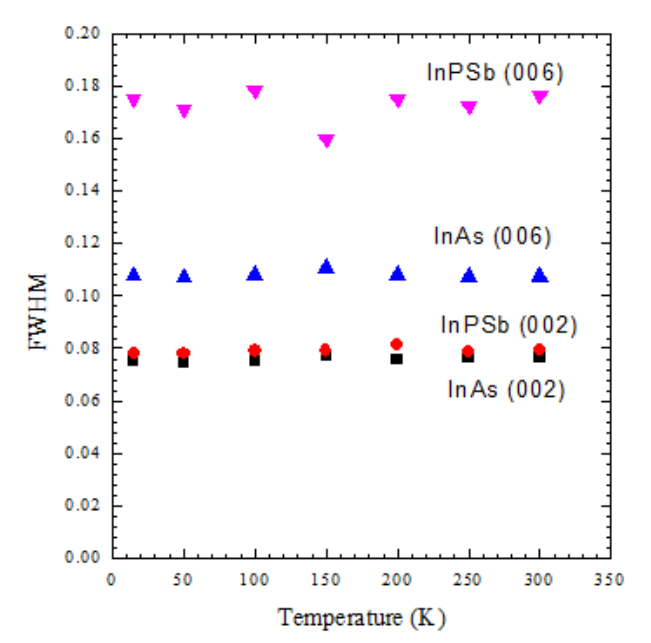
|
|
Fig.3 Linewidths of different reflection |
|
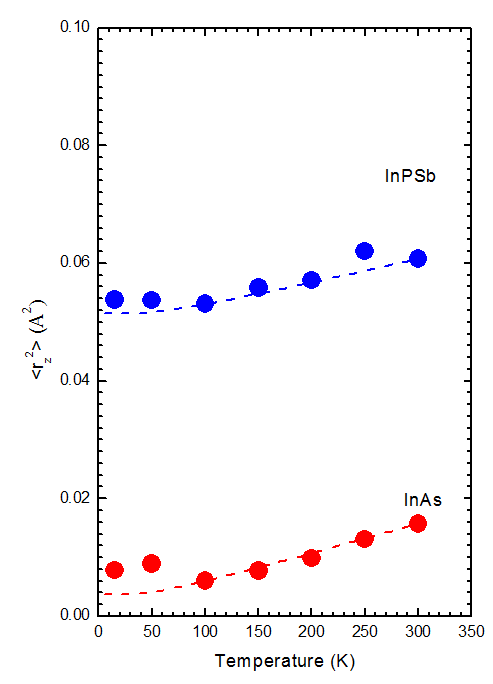
|
|
Fig.4 Mean square displacement
<u2>
versus temperature |
Environmentally Friendly Fluorescent Materials without Rare-Earth Elements for Head-Up Display
Professor Ching-Fuh Lin
Graduate Institute of Photonics and
Optoelectronics, National Taiwan University
Head-up display nowadays can be divided into two main types: penetrating (with optical lens group) and projection (without optical lens group). The penetrating type mainly uses the lens group to design the optical path and project the information out of the windshield in front of driver about one meter. In general, this method requires a lens set to focus the optical path and increase the distance of the projected image. Since the lens set will reduce the intensity of the light, the light source needs to be equipped with a high brightness, so the design is complicated and costly. The projection type is mainly used by micro-projector, which projects the image on the reflective film on the windshield. However, the position of the sticking reflective film between the position of the head-up display must be adjusted so that the image can be correctly projected onto the driver's eye. In addition, reflection type is dependent on highly reflective surface to show the image. As a result, its transmission is low, so drivers cannot see the views outside of the windshield clearly.
In order to improve the low transmission and the strict limit of reflective angle, we proposed a non rare-earth fluorescence film to replace the reflective film. Also, we combine the non rare-earth fluorescence film with the blue display device as a head-up-display configuration. Compared with the reflective film, our self-made luminescent film has several advantages. For example, we take the mechanism of photoluminescence, so it possesses high transmission and high display effect. Furthermore, the film is based on photoluminescence. The viewing angle is much broader than the reflective film. In addition, we convert the less sensitive blue light of the human eye into the most sensitive green light of the human eye, so we can have a more obvious display effect under the same projection power. Finally, the fluorescent display film has a grain-free boundary in appearance, no uneven surface, no frosted glass, high transparency, hence providing the high potential for head-up display in the future.
|

|
|
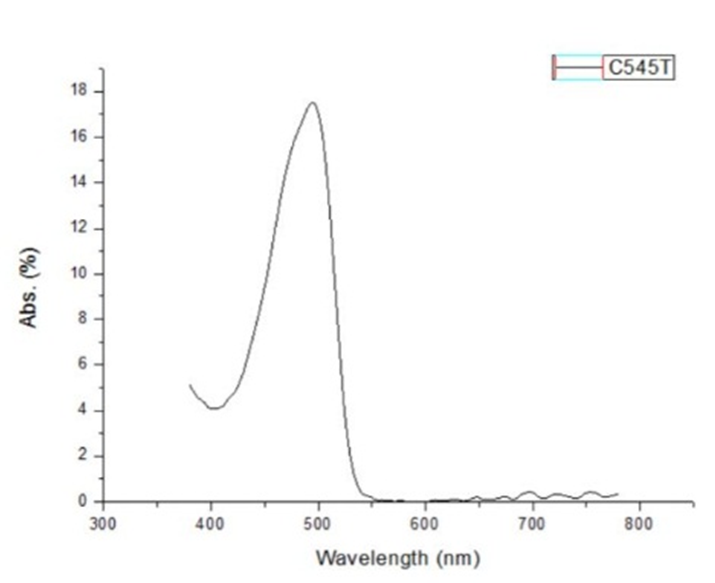
|
|
Fig. 1. 2. The transmission between
commercial film and fluorescence film;
absorption of fluorescence film |
|

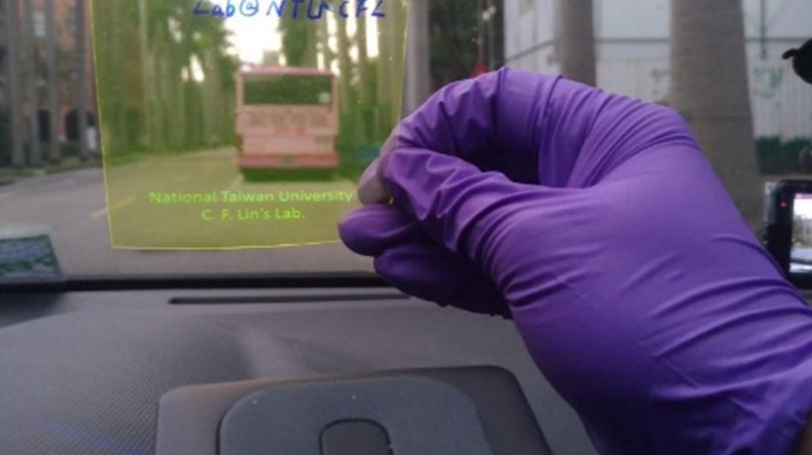
|
|
Fig. 3. 4. The outward projection image of
fluorescence film |
Multiwavelength generation from multi-nonlinear optical process in a 2D PPLT
Professor Lung-Han Peng
Graduate Institute of Photonics and
Optoelectronics, National Taiwan University
In a collaboration with University of Paris 13, Prof. Lung-Han PENG and Prof. Azzedine BOUDRIOUA recently have a joint publication “Multiwavelength generation from multi-nonlinear optical process in a 2D PPLT,”
published in Opt. Exp.
25,
30253 (2017)”
In this work, two-dimensional nonlinear photonic crystals made of lithium tantalite square lattice structures with periodicity of 8.5μm х 8.5μm, and size of 2cm long and 1cm wide were prepared for investigating the nonlinear optical processes. With increase of green pump intensity (Fig.1) from 50 MW/cm2 to 260 MW/cm2, we observed progressive multi-wavelength generation in spectral range from 400nm to 1650nm with increase of peak intensity and blue shifting in the newly generated wavelength. Further analyses indicate that the optical signals were ascribed to the quasi-phase-matching processes due to second harmonic generation, sum-frequency generation and other frequency conversion in a cascade process. These conversions are assisted by all the optical nonlinear process involving
χ(2) and achieved by satisfying the quasi-phase matching conditions.
Reference: Zohra Yellas, Min Won Lee, Régis Kremer, Kai-Hsun Chang, Mahmoud R. Beghoul, Lung-Han Peng, and Azzedine Boudrioua, “Multiwavelength generation from multi-nonlinear optical process in a 2D PPLT,”
Opt. Exp.
25,
30253 (2017).
|
|
|
 |
|
 |
|
| |
|
|
 |
|
 |
|
|
|
|